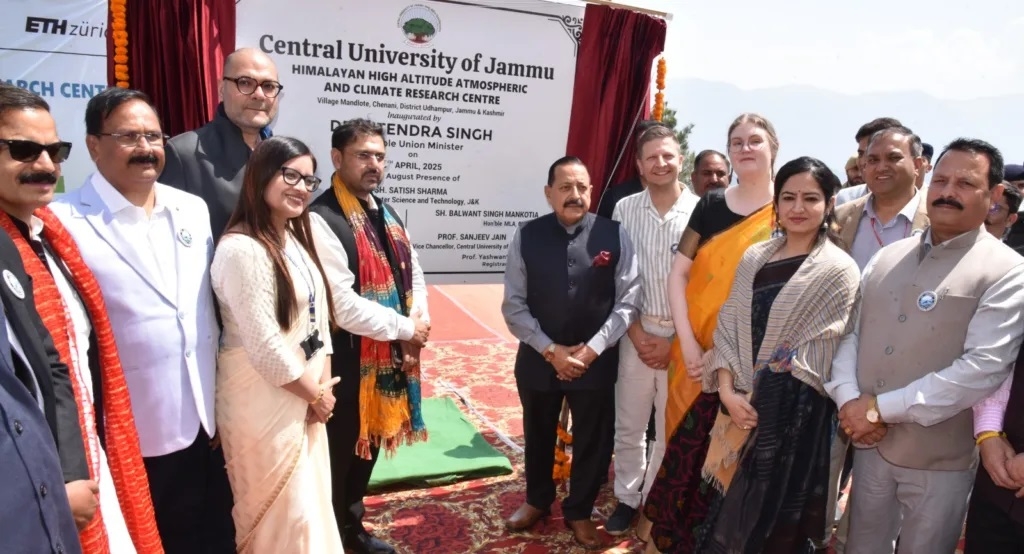Country’s first climate change station launched in J&K
| Date :09-Apr-2025 |

PATNITOP/JAMMU :
UNION Minister Dr Jitendra Singh launched India’s first high-altitude climate research station in Jammu and Kashmir’s Udhampur district on Tuesday and said that India is now at the forefront of climate forecasting and research in the Himalayas.
Giving credit to Prime Minister Narendra Modi for India’s leadership in climate change initiatives, Singh said this marks a significant milestone in India’s global leadership in climate science.
“Today, India opens a gateway into climate forecast and research in the Himalayas,” Singh said while inaugurating the first-ever Himalayan high-altitude atmospheric and climate research center in the higher hill reaches of Nathatop, near here.
Union Minister Singh inaugurated the centre at Mandlote village in Chenani tehsil. He was accompanied by Jammu and Kashmir Minister of Science and Technology Satish Sharma.
“This move marks a significant milestone in India’s global leadership in climate science,” Sharma said, adding that Jammu and Kashmir is leading India’s global initiative in climate study and research in the Himalayas.
The state-of-the-art facility, situated at one of the highest altitudes in the region, is expected to serve as a crucial gateway for cutting-edge climate research in the northwestern Himalayas.
Singh also flagged off the Indo-Swiss joint research project “Ice-Crunch (Ice nucleating particles and cloud condensation nuclei properties in the northwestern Himalayas)” -- a collaborative study between Indian scientists and researchers from ETH Zürich, Switzerland, aimed at exploring the properties of ice nucleating particles and cloud condensation nuclei in the region.
“This is not just a scientific milestone, it is a historic moment.
With the establishment of this station, we are opening up a new gateway into climate research and studies in the Himalayas, with India leading the way,” Singh said.
The minister emphasized that choosing Jammu and Kashmir for this facility was deliberate, leveraging its high-altitude advantage for more accurate atmospheric and climate measurements.
“This also means that J&K is contributing to India’s global efforts to address climate concerns,” he said.
Singh reflected on how India is now taken seriously on the global stage in climate action and research. “Today, under Prime Minister Narendra Modi, we have become a leader,” he said, citing India’s commitment to net-zero targets and the increasing credibility of its climate strategies worldwide.
The Nathatop center is a product of multi-tier collaboration—between the Government of India through the Ministry of Science & Technology, the Jammu and Kashmir government, and the Central University of Jammu, besides the Swiss National Science Foundation, which provides international expertise.
Calling it a “synergised model” of governance and global partnership, Singh said this collaboration reflects India’s broader approach to climate resilience through coordinated efforts.
He cited dedicated Himalayan missions such as the Aroma Mission and the Floriculture Mission, which are unlocking the region’s potential and adding value to India’s economy.
“Preserving the Himalayas is not just a regional concern but a global imperative,” Singh emphasized, noting that the region’s vast, unexplored resources could play a pivotal role in India’s future economic growth.
